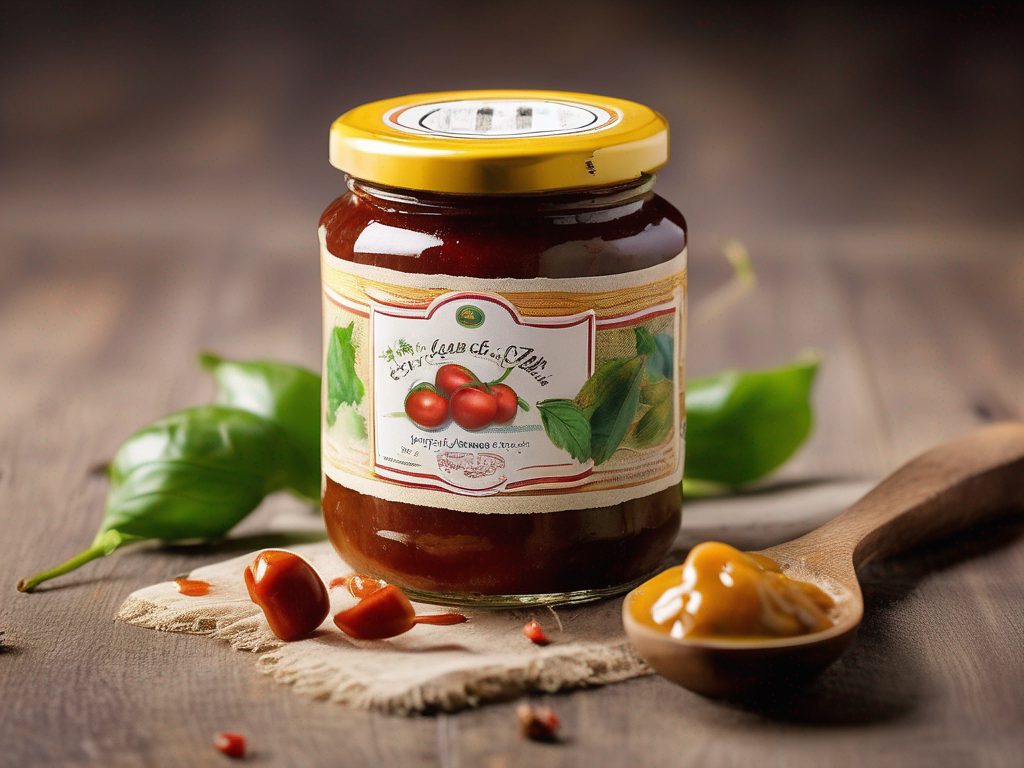
Extending the Shelf Life of Chutney Commercially Bottled Opened
Get Your Free Food Safety Cheat Sheet
30 most common foods with instant answers. Print it and stick it on your fridge—completely free!
Extending the Shelf Life of Chutney Commercially Bottled Opened
Chutney is a flavorful and versatile condiment that can add a burst of taste to a variety of dishes. When stored properly, commercially bottled opened chutney can maintain its quality and flavor for an extended period. In this blog post, we will explore effective ways to extend the shelf life of opened chutney to ensure food safety and prevent spoilage. (Chutney commercially bottled opened)
Understanding Chutney and Its Shelf Life
Chutney is a condiment typically made from a mixture of fruits, vegetables, spices, and vinegar. It is known for its sweet, savory, and tangy flavors, making it a popular accompaniment to dishes such as curries, sandwiches, and snacks. Commercially bottled chutney is processed and sealed to maintain its freshness and quality.
Once opened, chutney is exposed to air and moisture, which can lead to microbial growth and spoilage. To maximize the shelf life of opened chutney, it is essential to store it properly and follow food safety guidelines.
Factors Affecting Shelf Life
Several factors can influence the shelf life of opened chutney:
- Storage Temperature: Chutney should be stored in a cool, dry place away from direct sunlight and heat sources.
- Contamination: Avoid cross-contamination by using clean utensils to scoop out chutney and sealing the bottle tightly after each use.
- Air Exposure: Limit exposure to air by resealing the bottle promptly and using airtight containers for leftovers.
- Moisture Content: Excess moisture can promote mold growth, so ensure that the chutney does not come into contact with water.
Tips for Extending Shelf Life
To prolong the shelf life of opened chutney and maintain its quality, consider the following tips:
1. Proper Storage
- Store opened chutney in the refrigerator to slow down microbial growth and preserve freshness.
- Keep the chutney in its original bottle or transfer it to a clean, airtight container to prevent contamination.
- Check the bottle for any signs of damage or spoilage before using the chutney.
2. Avoiding Contamination
- Use clean, dry utensils to scoop out chutney and avoid double-dipping to prevent introducing bacteria.
- Wipe the bottle's rim clean before resealing it to remove any residue that could promote spoilage.
- Wash your hands before handling the chutney to prevent transferring bacteria.
3. Monitoring Quality
- Check the chutney for any changes in color, texture, or smell, as these can indicate spoilage.
- Discard the chutney if you notice mold growth, off odors, or unusual discoloration.
- Label the bottle with the date it was opened to track its shelf life and ensure timely consumption.
4. Freezing Chutney
- If you have a large quantity of opened chutney that you cannot consume within a few weeks, consider freezing it.
- Transfer the chutney to a freezer-safe container, leaving some room for expansion, and label it with the date.
- Frozen chutney can last for several months and be thawed in the refrigerator before use.
5. Using Chutney Creatively
- Incorporate chutney into various dishes such as marinades, dressings, dips, and glazes to use it up before it spoils.
- Experiment with different flavor combinations by mixing chutney with yogurt, cream cheese, or mayonnaise for unique spreads.
Conclusion
By following proper storage practices, avoiding contamination, monitoring quality, freezing excess chutney, and using it creatively, you can extend the shelf life of commercially bottled opened chutney and enjoy its flavors for longer. Remember to prioritize food safety and quality when handling and storing chutney to prevent foodborne illnesses and spoilage. With these tips, you can make the most of your chutney while ensuring a delightful culinary experience. (Chutney commercially bottled opened)
Authoritative Food Safety References
These agencies and university labs inform every tip and health precaution we publish.
USDA FoodKeeper – Cold Storage Guidelines
Official refrigerator, freezer, and pantry timelines maintained by the U.S. Department of Agriculture.
Visit USDA FoodKeeperFDA Produce Safety Rule & Grower Guidance
Field-to-fridge handling practices that prevent contamination of fruits, vegetables, and leafy greens.
Visit FDA Produce SafetyCDC Foodborne Illness Prevention Hub
Surveillance-backed guidance on pathogens, symptoms, and steps to reduce foodborne illness risk.
Visit CDC Food SafetyUC Davis Postharvest Technology Center
University research detailing optimal storage atmospheres for produce after harvest.
Visit UC Davis PostharvestPenn State Extension – Home Food Preservation & Safety
Peer-reviewed extension bulletins on safe canning, chilling, and reheating practices.
Visit Penn State ExtensionGet Your Free Food Safety Cheat Sheet
30 most common foods with instant answers. Print it and stick it on your fridge—completely free! Want more? Upgrade to the complete guide with 70+ foods.
Scan your food directly and get instant safety info using our AI-powered camera feature.